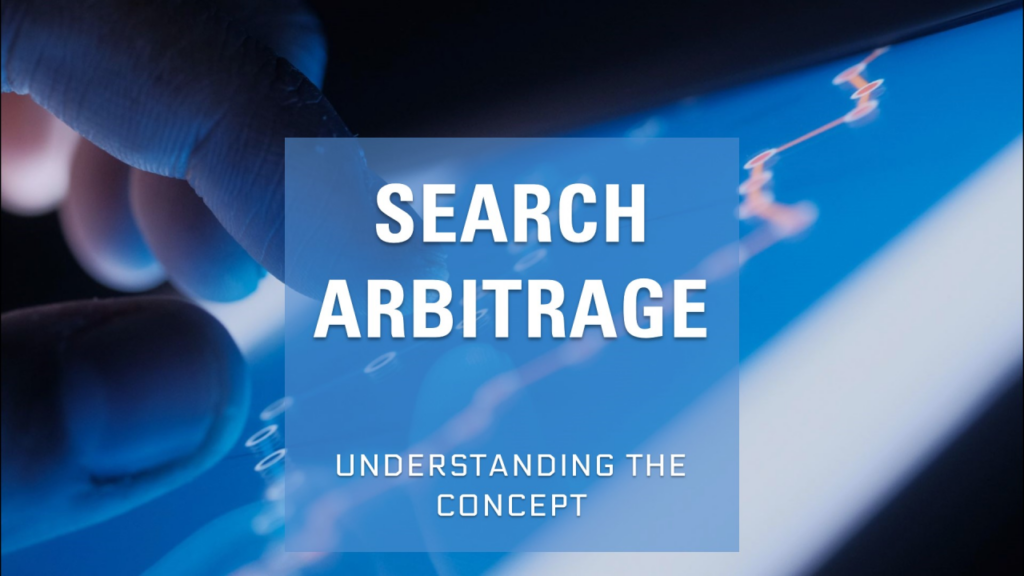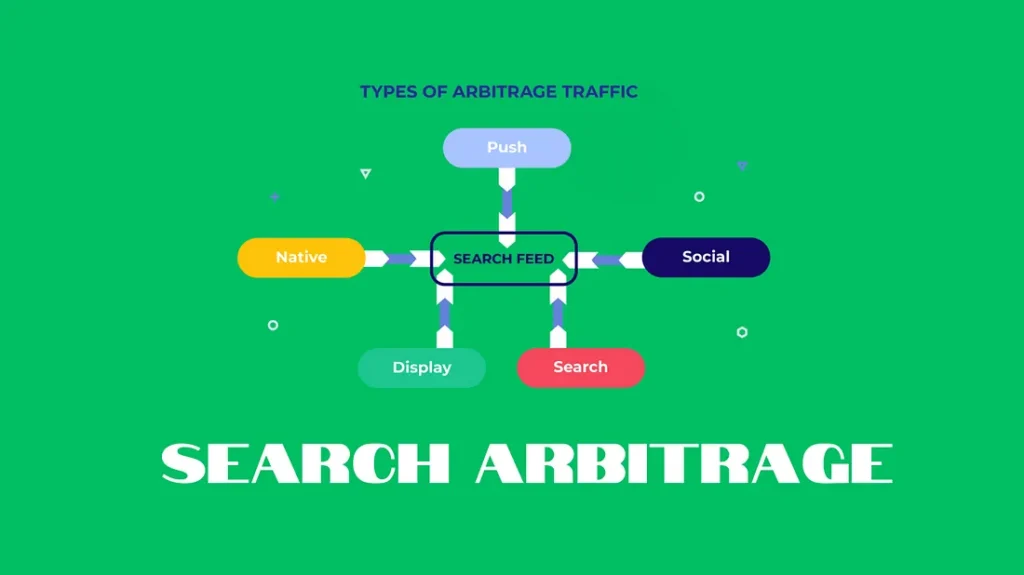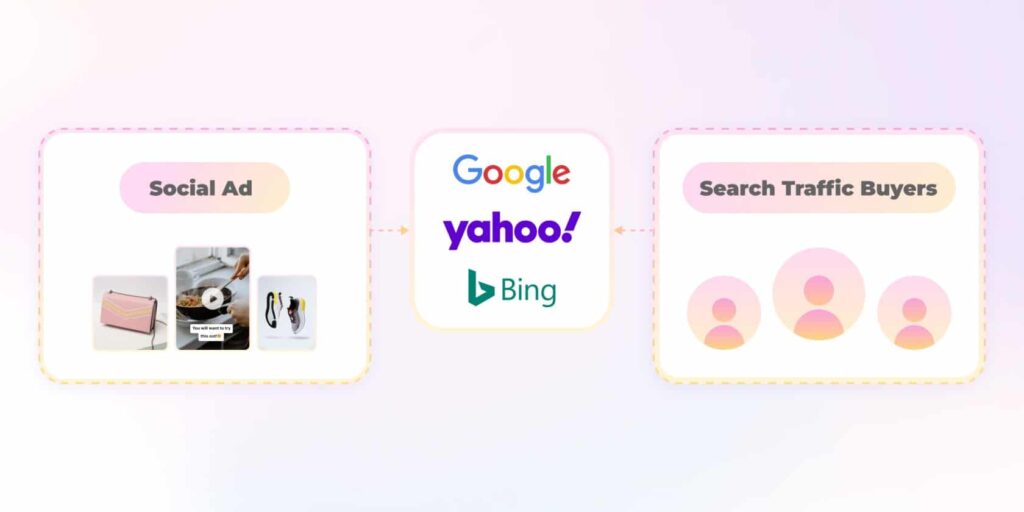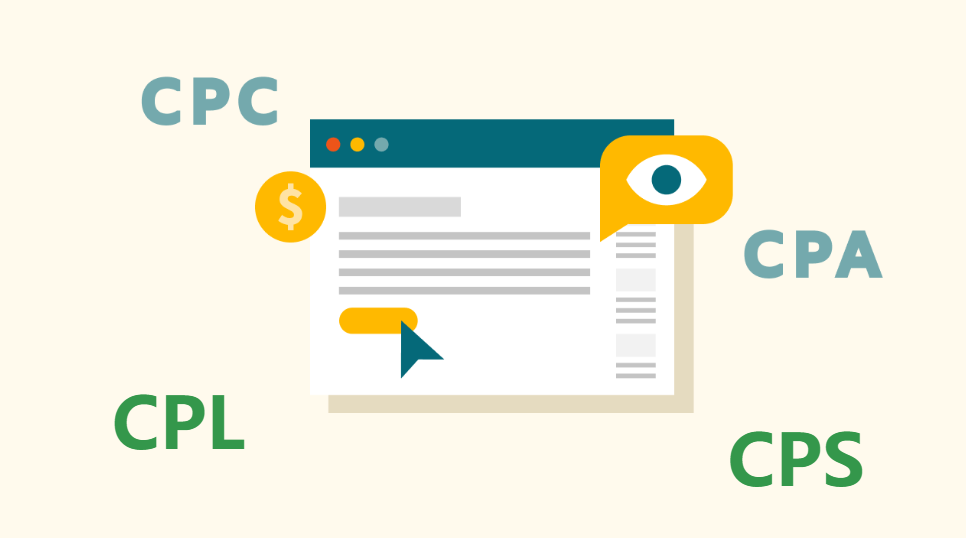In the dynamic realm of digital marketing, understanding the intricacies of traffic types is paramount to success. Search arbitrage, a sophisticated strategy utilized by savvy marketers, hinges on decoding the nuances of various traffic sources. In this comprehensive guide, we delve into four key traffic types—Display to Search, Search to Search, Native to Search, and Social to Search—providing invaluable insights to help you optimize your campaigns and surpass competitors in the digital landscape.
Table of Contents
Brief Overview of Search Arbitrage
Search arbitrage is a strategic method used in online advertising where advertisers exploit the price difference between the cost per click (CPC) for paid search ads and the revenue generated from the traffic those ads bring to a website.
Essentially, it involves buying traffic from one source, such as search engines, and then monetizing that traffic through another source, such as ads or affiliate links on a website. Search arbitrage relies on identifying profitable keywords, optimizing landing pages, and managing ad campaigns effectively to generate revenue from the traffic acquired.
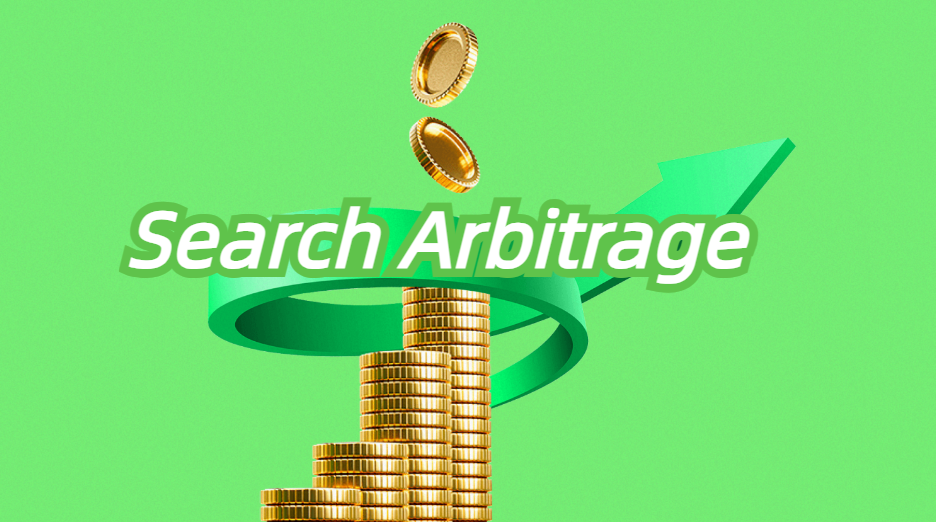
Importance of Traffic Types in Digital Marketing
In digital marketing, different traffic types play a crucial role in driving visitors to a website and ultimately converting them into customers. Understanding these traffic types is essential for creating targeted marketing strategies that maximize return on investment (ROI) and achieve business objectives. Here’s a brief overview of the key traffic types in digital marketing:
- Organic Traffic: This refers to visitors who find a website through unpaid search engine results. Organic traffic is valuable because it often consists of users actively searching for relevant information or products, indicating a high level of intent.
- Paid Traffic: Paid traffic involves acquiring visitors through paid advertising channels such as pay-per-click (PPC) ads, display ads, or social media advertising. While paid traffic requires a financial investment, it can yield immediate results and allows for precise targeting of specific audience segments.
- Social Media Traffic: Social media platforms are powerful channels for driving traffic to a website. Social media traffic comes from users clicking on links shared on social media posts, ads, or profiles. Leveraging social media effectively can increase brand visibility, engagement, and website traffic.
- Referral Traffic: Referral traffic comes from external websites that link to a website. This traffic type is often the result of partnerships, collaborations, guest blogging, or mentions on other websites. Referral traffic can be highly targeted and can contribute to building authority and credibility within a niche.
- Direct Traffic: Direct traffic consists of visitors who access a website by directly typing its URL into their browser or clicking on a bookmarked link. It reflects strong brand recognition and user loyalty, making it important for businesses to prioritize user experience and brand consistency.
- Undefined Traffic: Undefined traffic encompasses visits with unclear origins due to tracking limitations or missing referrer information. While challenging to attribute, it presents opportunities for businesses to optimize tracking methods and analyze user behavior to enhance overall marketing strategies.
Each traffic type comes with its unique characteristics and conversion potential. By analyzing and optimizing for these traffic types, businesses can maximize their online visibility, drive qualified leads, and ultimately achieve their marketing objectives. Additionally, leveraging a diverse mix of traffic sources can help mitigate risks and ensure a sustainable flow of visitors to a website or online platform.
This content is sourced from Youtube: View more.

Exploring 4 Traffic Types of Search Arbitrage
In the world of online marketing, understanding the four traffic types in Search Arbitrage is key. Let’s explore them to optimize strategies efficiently.
Display to Search: Bridging the Gap
Display advertising acts as a pivotal bridge between external platforms and your website, seamlessly guiding users from their initial engagement to actively seeking out your offerings. Leveraging visually captivating banners, videos, and interactive content, display ads aim to capture the attention of potential customers browsing across websites and platforms.
With strategic placement and compelling messaging, businesses can entice users to click through to their website, initiating the journey from display to search. By optimizing ad creatives, targeting relevant audiences, and monitoring performance metrics, marketers can maximize the effectiveness of display advertising in driving qualified traffic to their websites.

Search to Search: Navigating Intent
Search to search traffic originates from users conducting subsequent searches within a search engine after their initial query. This traffic type signifies a deeper level of engagement and intent, as users refine their search queries or seek additional information related to their original search intent.
Marketers can capitalize on search to search traffic by understanding user intent, optimizing content to address specific queries, and providing comprehensive solutions to meet user needs. By monitoring search trends, identifying high-intent keywords, and refining search engine optimization (SEO) strategies, businesses strive to rank high on search engine results pages (SERPs) to attract organic traffic and convert search to search traffic effectively.
Last But Not Least, search to search traffic tends to exhibit higher conversion rates and lower acquisition costs, making it an invaluable asset in the realm of search arbitrage.

Native to Search: Seamlessly Integrated
Native advertising seamlessly integrates promotional content into the user experience of online platforms, mirroring the form and function of the surrounding content. Native ads blend in seamlessly with editorial content, social feeds, or app environments, fostering a non-disruptive user experience while subtly promoting products or services.
By crafting engaging native ad content that resonates with target audiences, businesses can drive traffic to their websites organically. Moreover, leveraging native advertising platforms’ targeting capabilities and performance analytics enables marketers to optimize campaigns and maximize ROI.

Social to Search: Amplifying Engagement
Social media platforms serve as fertile grounds for cultivating brand awareness, fostering community engagement, and driving website traffic. Social to search traffic encompasses visitors directed to a website through social media channels, such as Facebook, Instagram, Twitter, LinkedIn, TikTok and Pinterest.
By crafting compelling social media content, fostering authentic engagement, and leveraging targeted advertising, businesses can amplify brand visibility and drive traffic to their websites. Additionally, social media analytics tools offer valuable insights into audience demographics, preferences, and behaviors, enabling businesses to refine their strategies and maximize ROI.
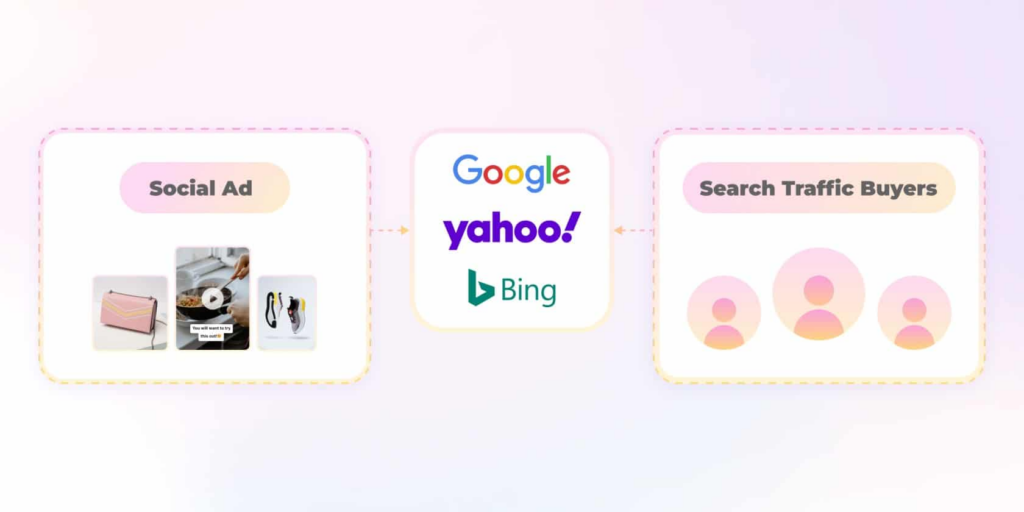
Conclusion
In the ever-evolving landscape of digital marketing, mastering the intricacies of traffic types is essential for maximizing website traffic and achieving marketing objectives. Whether harnessing the visual allure of display advertising, capitalizing on user intent in search to search traffic, seamlessly integrating native ads into the user experience, or amplifying engagement through social media channels, each traffic type presents unique opportunities and challenges. By understanding the distinct characteristics of each traffic source and deploying targeted strategies, businesses can unlock the full potential of their digital marketing efforts and stay ahead of the competition in the dynamic online ecosystem.
FAQs
What is search arbitrage, and how does it differ from traditional advertising methods?
Search arbitrage is an advanced strategy in online advertising where marketers exploit the price disparity between the cost per click (CPC) for paid search ads and the revenue generated from the traffic those ads bring to a website. Unlike traditional advertising, which focuses solely on promoting products or services, search arbitrage involves buying traffic from one source and monetizing it through another.
How do you identify profitable keywords for search arbitrage campaigns?
Identifying profitable keywords is crucial for the success of search arbitrage campaigns. Marketers typically conduct keyword research using tools like Google Keyword Planner or SEMrush to identify high-volume, low-competition keywords relevant to their niche. Additionally, analyzing competitors’ keywords and monitoring trends in search queries can help uncover lucrative keyword opportunities.
What are some common pitfalls to avoid in search arbitrage campaigns?
Some common pitfalls to avoid in search arbitrage campaigns include overbidding on keywords, neglecting to track conversions accurately, targeting irrelevant audiences, and failing to optimize landing pages for conversions. Additionally, violating search engine advertising policies or engaging in deceptive practices can result in penalties or account suspensions. It’s essential for marketers to stay informed about industry best practices and adhere to ethical standards when implementing search arbitrage strategies.
Becoming a publisher with Bluefriday is straightforward. Begin displaying ads and earning revenue immediately.


